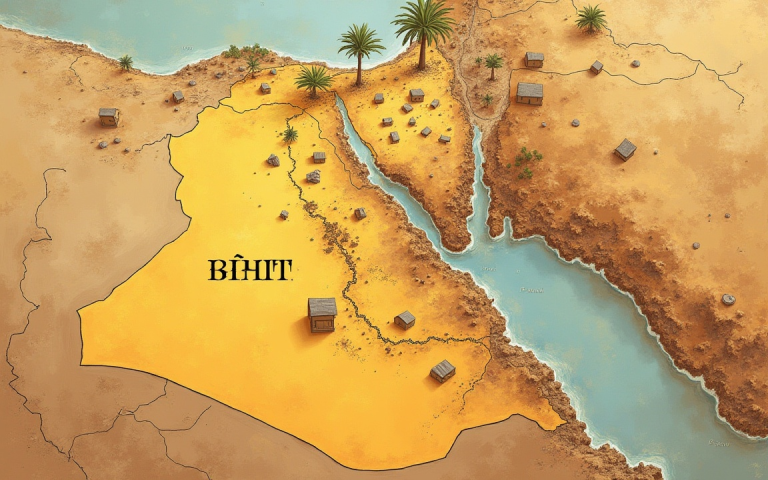Climate change poses a severe threat to Iraq’s ancient southern cities, leading to the erosion of thousands of years of history.
Iraqi officials are raising concerns, highlighting the urgent need to protect these monuments that represent the cradle of civilization from disappearing, according to a Reuters report.
Harsh, dry weather conditions are contributing to increased soil salinity, which is in turn causing damage to historical monuments.
These include structures in ancient cities like Ur, recognized as the birthplace of the Biblical patriarch Abraham, and Babylon, once a magnificent imperial capital.
The magnificent Ziggurat of Ur, a colossal stepped pyramid temple dedicated over 4,000 years ago to Nanna, the moon god, is experiencing deterioration on its northern flank due to encroaching sand dunes.
Abdullah Nasrallah, an archaeologist with Dhi Qar province’s antiquities department, noted that the convergence of wind and sand dunes is causing erosion in the northern parts of the structure. The city of Ur is situated in Dhi Qar province.
Ancient mud bricks threatened by salt
A UNESCO World Heritage Site, this shrine stands as a testament to ancient Mesopotamian architecture.
It is remarkably well-preserved, providing valuable insights into the religious practices and sacred rituals of the Sumerian empire, one of the world’s earliest civilizations.
Nasrallah was quoted as saying by Reuters:
While the third layer (of the Ziggurat) had already deteriorated due to weathering and climate change, erosion has now begun to affect the second layer.
The Royal Cemetery of Ur, unearthed by British archaeologist Sir Leonard Woolley in the 1920s, is currently jeopardized by salt deposits. These deposits are eroding the mud bricks of the cemetery, putting it at risk of collapse.
“These salt deposits appeared due to global warming and climate change – which led to the destruction of important parts of the cemetery,” Dr. Kazem Hassoun, an inspector at the antiquities department in Dhi Qar was quoted in the report.
Eventually, the deposits will cause the complete collapse of the mud bricks that make up this cemetery.
Increased salinity levels in southern Iraq, where the Tigris and Euphrates rivers meet before flowing into the Gulf, are a consequence of the region’s severe droughts and rising temperatures.
Need for restoration
The ancient archaeological sites of Babylon, located further up the Euphrates, are in urgent need of restoration and attention.
However, according to Dr. Montaser al-Hasnawi, director general of Iraq’s Ministry of Culture and Tourism, a lack of funding poses a significant challenge.
Decades of warfare, including the 1980s Iran-Iraq War, the early 1990s Gulf War, the 2003 US-led invasion, subsequent insurgent violence, and the rise and fall of the Islamic State group, have threatened the country’s historical structures.
Climate change poses the latest threat, fundamentally altering the country’s ecosystem. This not only jeopardizes its agricultural future but also imperils its historical legacy.
Ancient structures in Babylon, featuring elaborate Sumerian drawings on their clay-based materials, are at risk due to high salinity levels.
Hasnawi noted that the materials, directly sourced from land with lower salinity, should have made the structures less susceptible to climate change.
However, faulty restoration efforts in prior decades heightened their vulnerability. The increasing salinity now intensifies the urgency to correct these flawed restoration practices.
The post Soil salinity and erosion endanger ancient Mesopotamian sites in Iraq appeared first on Invezz

